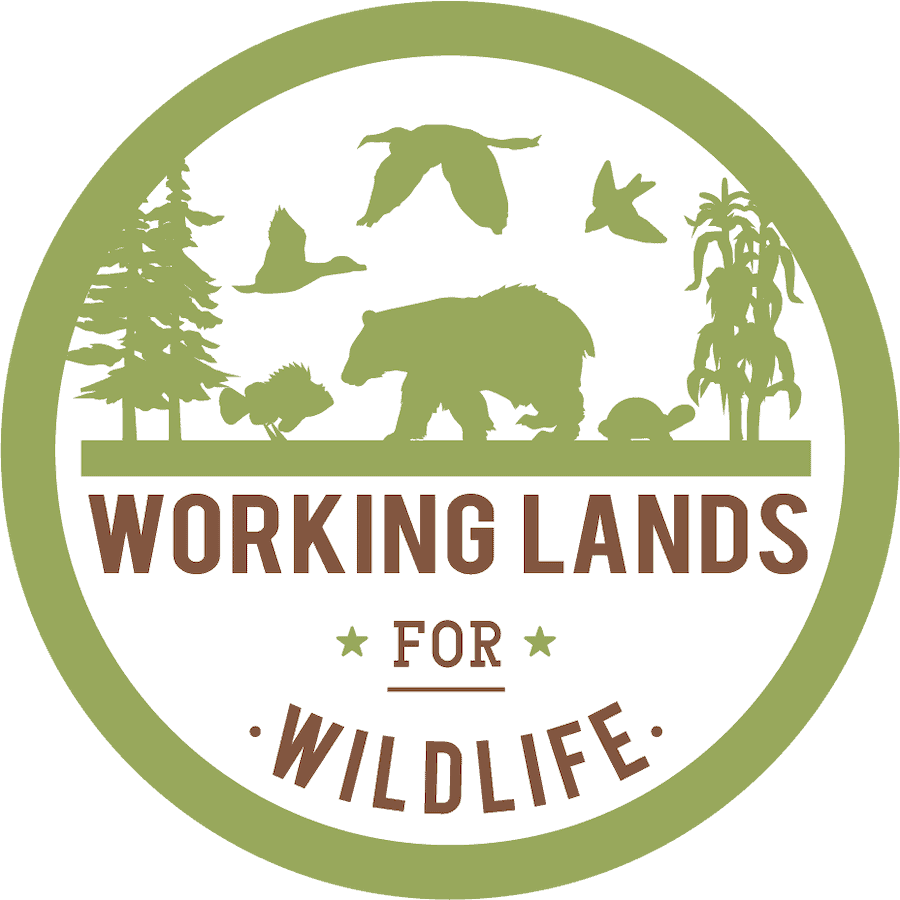-
 American Black Duck Decision Support Tool
American Black Duck Decision Support Tool
-
by
Rhishja Cota
—
published
Nov 09, 2022
—
last modified
Jul 26, 2023 12:14 PM
—
filed under:
Additional Resources,
American Black Duck,
Decision Support Tools,
Climate Change,
American Black Duck Additional Resources,
Watersheds,
Black Duck,
Research,
Urbanization,
Peer-reviewed Science,
Waterfowl,
Migration,
Aquatics,
Products,
Birds,
Resources,
Salt marshes
The Atlantic Coast Joint Venture Black Duck Decision Support Tool (DST) helps to identify the exact number of acres to protect, restore or maintain at the small watershed scale. Through this tool, land managers can determine the best way to contribute to achieving black duck goals anywhere on the landscape.
Located in
Information Materials
/
Research
/
Peer-reviewed Science
-
 Assessment of Native Grasses for Forage & Bobwhite Habitat
Assessment of Native Grasses for Forage & Bobwhite Habitat
-
by
Bridgett Costanzo
—
published
Jun 11, 2019
—
last modified
Apr 21, 2023 12:36 AM
—
filed under:
WLFW Outcomes: Funded Research,
WLFW,
Northern Bobwhite Quail,
Research,
Grasslands and Savannas,
Working Lands for Wildlife
The University of Tennessee Institute of Agriculture, through its Center for Native Grasslands Management will conduct a study to evaluate the effectiveness of a working lands conservation model for enhancing northern bobwhite and other grasslands wildlife populations. Specifically, we will evaluate native grass forage production within fescue-belt landscapes to determine how effective this strategy is for improved survival and productivity of northern bobwhite and abundance of associated grassland bird species. The study will be conducted in cooperation with partner agencies within the fescue belt.
Located in
Information
/
Research
/
WLFW Outcomes: Funded Research
-
 Bear Creek to Signal Peak
Bear Creek to Signal Peak
-
by
Rhishja Cota
—
published
Oct 27, 2022
—
filed under:
Wildland Fire,
Research
The Bear Creek to Signal Peak Collaborative Restoration Project area is located north and west of Silver City in southwestern New Mexico.
Located in
Resources
/
…
/
Projects
/
Fire-Community & Infrastructure
-
 Big Flat Community Protection
Big Flat Community Protection
-
by
Rhishja Cota
—
published
Oct 27, 2022
—
filed under:
Wildland Fire,
Research
The Big Flat Community Protection Project boundary landscape covers approximately 11,388 acres dominated by dense stands of even-aged Douglas-fir and tanoak that present a high hazardous fuels risk for the remote wildland urban interface (WUI) community of Big Flat.
Located in
Resources
/
…
/
Projects
/
Fire-Community & Infrastructure
-
 Butte Valley South Landscape Restoration
Butte Valley South Landscape Restoration
-
by
Rhishja Cota
—
published
Oct 27, 2022
—
filed under:
Wildland Fire,
Research
Since 2010, wildfires have burned nearly 770,000 acres in Siskiyou County, California. Prescribed burns are a useful management tool for resilient and healthy landscapes, forests and watersheds, while larger fuel loads and less resilient landscapes threaten local communities, human health and safety, habitat, wildlife, and natural resources.
Located in
Resources
/
…
/
Projects
/
Prescribed Burn
-
 Catalina-Rincon Restoration and Fuels Mitigation
Catalina-Rincon Restoration and Fuels Mitigation
-
by
Rhishja Cota
—
published
Oct 27, 2022
—
filed under:
Wildland Fire,
Research
The Catalina-Rincon Restoration project area consists of 925,450 acres, encompassing the Santa Catalina Ranger District of the Coronado National Forest (CNF). The project area wraps around the northern and eastern sides of the Tucson basin with a population of nearly 1 million.
Located in
Resources
/
…
/
Projects
/
Fire-Community & Infrastructure
-
 Comparing Remote Sensing and Field-Based Approaches to Estimate Ladder Fuels and Predict Wildfire Burn Severity
Comparing Remote Sensing and Field-Based Approaches to Estimate Ladder Fuels and Predict Wildfire Burn Severity
-
by
Rhishja Cota
—
published
Nov 02, 2022
—
filed under:
Remote Sensing,
Research,
Fire Mapping,
Products,
Science and Research Products,
Wildland Fire,
Projects,
Ladder Fuels
A comparative study on remote sensing and field-based approaches to estimate ladder fuel density. Can densities from different approaches predict wildfire burn severity?
Located in
Resources
/
Research
/
Products
-
 Connecting Fuels Treatments in the Salish Mountains and Whitefish Range
Connecting Fuels Treatments in the Salish Mountains and Whitefish Range
-
by
Rhishja Cota
—
published
Oct 27, 2022
—
filed under:
Wildland Fire,
Research
This landscape-scale fuels reduction project targets connecting 25 miles of cross boundary fuel reduction treatments within the rapidly expanding wildland urban interface (WUI) and communities at risk of catastrophic wildfire near the Salish Mountains west of Kalispell and north to the Whitefish Range.
Located in
Resources
/
…
/
Projects
/
Fire-Community & Infrastructure
-
 Eastern Divide Restoration
Eastern Divide Restoration
-
by
Rhishja Cota
—
published
Oct 27, 2022
—
filed under:
Wildland Fire,
Research
The Eastern Divide Restoration Project Area covers 2,260,480 acres (3,532 square miles) of public and private lands in Botetourt, Craig, Roanoke, Giles, Bland, Pulaski, Wythe, Tazwell, and Montgomery counties in Virginia.
Located in
Resources
/
…
/
Projects
/
Prescribed Burn
-
 Economic and Production Performance of Native Grasses as Forage in the Fescue Belt
Economic and Production Performance of Native Grasses as Forage in the Fescue Belt
-
by
Bridgett Costanzo
—
published
Jun 11, 2019
—
last modified
Apr 21, 2023 12:37 AM
—
filed under:
WLFW Outcomes: Funded Research,
WLFW,
Northern Bobwhite Quail,
Research,
Grasslands and Savannas,
Working Lands for Wildlife
The primary purpose of developing this literature review and summary was to inform producers about the potential benefits from utilizing warm-season grasses in the Fescue Belt. Effectively, managing forages is not always straightforward for livestock producers. Summarizing the economic and production benefits from using warm-season grasses could help producers make more informed forage management decision and might encourage producers to consider adopting warm-season grasses. Furthermore, this literature review also gathered information about the potential benefits of using native grasslands as forage to the quail population in this region, which could likely result in an economic benefit to the producer from leasing farmland to hunters.
Located in
Information
/
Research
/
WLFW Outcomes: Funded Research


